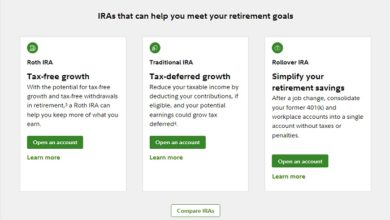
How much can you make with dividend stocks? Are dividend stocks good investments? Are dividend stocks income enough for your retirement. Let’s find out.
In my previous articles I already discussed the following related to dividend stocks;
We already compare the best investment for retirement, dividend stocks vs rental property here.
After you read those articles, lets find out now how much you really need to retire comfortably, and lets analyze if dividends stocks are good for retirement.
If you are monthly income today is $10,000 multiply by 12 is equal to $120,000 per annum. That means if you want to retire with passive income, you must earn $120,000 per year without getting sweat, without time and effort.
Dividend stocks pay 4% per year, some are 14% per year. It depends on the company earnings. Of course there are risks involved when you buy high paying dividend stocks whether you’re in United States or other country.
You need $3,000,000 to earn $120,000 passive income that this income will replace you and your money will start working for you,
Guide to Understanding Dividend Stocks: How Much Can You Make?
Dividend stocks can be an excellent addition to your investment portfolio, offering a steady stream of income over time. However, understanding how much you can make with dividend stocks requires insight into several factors such as the dividend yield, stock price appreciation, and your investment strategy. Here’s a comprehensive guide to help you navigate the world of dividend investing and estimate potential earnings.
1. Understanding Dividend Yield
Definition: Dividend yield represents the annual dividend income expressed as a percentage of the current stock price. It’s a crucial metric for evaluating the income potential of dividend stocks.
Formula: Dividend Yield = (Annual Dividend per Share / Current Stock Price) x 100
Example: If a stock pays an annual dividend of $2 per share and its current price is $50, the dividend yield would be (2 / 50) x 100 = 4%.
2. Estimating Dividend Income
Calculation: To estimate your potential dividend income from a stock, multiply the dividend yield by the total investment amount.
Example: If you invest $10,000 in a stock with a dividend yield of 4%, your estimated annual dividend income would be $10,000 x 0.04 = $400.
3. Reinvesting Dividends for Compound Growth
Strategy: Reinvesting dividends can accelerate wealth accumulation through the power of compounding. By purchasing additional shares with dividend payouts, you can benefit from both dividend income and potential capital appreciation.
Example: Assume you reinvest all $400 of annual dividends back into the same stock with a current price of $50 per share. At the end of the year, you would own an additional 8 shares ($400 / $50 per share). Over time, this reinvestment can significantly boost your wealth.
4. Considering Dividend Growth
Importance: Some companies consistently increase their dividends over time, providing investors with growing income streams. Investing in dividend growth stocks can enhance your long-term returns.
Example: A company that raises its dividend from $2 to $2.20 per share annually demonstrates a 10% dividend growth rate. If you hold 100 shares, your annual dividend income would increase from $200 to $220.
5. Monitoring Stock Price Appreciation
Impact: In addition to dividend income, stock price appreciation contributes to your overall returns. Investing in dividend stocks with strong fundamentals and growth potential can lead to capital gains over time.
Example: If the stock price of your dividend-paying company appreciates from $50 to $60 per share, you would realize a capital gain of $10 per share. If you own 100 shares, your total capital gain would amount to $1,000.
6. Tax Implications of Dividend Income
Consideration: Dividend income is typically subject to taxation. Understanding the tax treatment of dividends in your jurisdiction is essential for accurate investment planning.
Example: In the United States, qualified dividends are taxed at preferential rates, while non-qualified dividends are taxed at ordinary income tax rates. Consult with a tax advisor to optimize your tax strategy.
Conclusion
Investing in dividend stocks can generate a reliable stream of income and contribute to long-term wealth accumulation. By understanding key metrics such as dividend yield, dividend growth, and stock price appreciation, you can make informed investment decisions to maximize your returns. Diversify your portfolio and consult with financial professionals for personalized advice tailored to your financial goals and risk tolerance.
Photo Credit: https://www.freepik.com/free-photo/portrait-middle-aged-blonde-rich-woman-with-banknotes_31286631.htm
Disclaimer: The examples provided in this guide are for illustrative purposes only. Actual returns may vary based on market conditions and individual investment decisions.









DISCLAIMER: The information provided on InvestmentTotal.com is for general informational purposes only. The content on this website is not intended to be, and should not be construed as, professional financial advice.